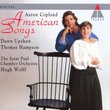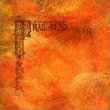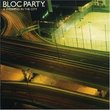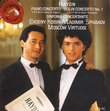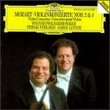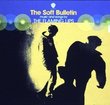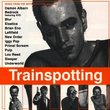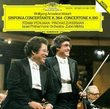| All Artists: Henry Cowell, John [1] Cage, Ben [1] Johnston, Conlon Nancarrow, Robert Miller Title: Sound Forms For Piano Members Wishing: 2 Total Copies: 0 Label: New World Records Original Release Date: 1/1/1989 Re-Release Date: 2/28/1995 Genre: Classical Styles: Chamber Music, Forms & Genres, Short Forms, Sonatas, Historical Periods, Classical (c.1770-1830), Modern, 20th, & 21st Century, Instruments, Keyboard Number of Discs: 1 SwapaCD Credits: 1 UPC: 093228020325 |
Search - Henry Cowell, John [1] Cage, Ben [1] Johnston :: Sound Forms For Piano
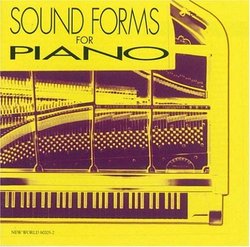 | Henry Cowell, John [1] Cage, Ben [1] Johnston Sound Forms For Piano Genre: Classical
Three important early pioneers of New Music make tremendous splashes on this anthology of works for the piano. Pianist Robert Miller opens the collection with three of Cowell's distinctive, swirling pieces, bowing the pi... more » |
Larger Image |
CD DetailsSynopsis
Amazon.com Three important early pioneers of New Music make tremendous splashes on this anthology of works for the piano. Pianist Robert Miller opens the collection with three of Cowell's distinctive, swirling pieces, bowing the piano strings with a fury for sonic expansion. Miller also engages Cowell's unforgettable chord clusters, with their large, slamming intensity and rich resonance. He also takes on several of Cage's early Sonatas and Preludes for prepared piano and Nancarrow's influential, oddly virtuosic Studies for Player Piano, examining alterations in both pianistic tone and execution. Ben Johnston's lively, Cowell-inspired Sonata for Microtonal Piano rounds out this comprehensive overview of avant-garde 20th-century piano music. --Andrew Bartlett Similarly Requested CDs
|
CD ReviewsHighly recommended 05/15/2003 (5 out of 5 stars) "This is, without doubt, one of the finest recordings of American experimental music ever issued, performed with loving care by the late, great Robert Miller except for Nancarrow's studies. The excellent notes by Charles Hamm should prepare listeners unfamiliar with this musical universe for what they are going to hear.Although there is a logical connection between the works that imaginative juxtaposition on the disc enhances, Cowell, Cage, Johnston, and Nancarrow arrive at their musical conclusions from completely different directions. This disc is a tribute to the nonuniformity of American experimental music.Listeners should spend some time at their local music libraries familiarizing themselves with the scores, just to see how the composers get these startling results." Personal response is not always judgment Discophage | 04/28/2003 (4 out of 5 stars) "I have my reservations concerning pure sonority, or intellectual game, or a combination of both as a basis for composition. But I also have reservations about what so many composers have done "on the keys" with sonority and intellectual game - or is it just plain "thinking" or "intuition" or "composition lessions"? Most of it, in any era, is either dismissed or lost, or never comes to light at all (never more true than now).If one does not share Messiaen's religious viewpoint, his wonderful music can get (let's be gentle) tedious; it certainly borders on the pretentious at times (I know he wasn't that way personally); some might say blasphemous. But what is really his most accessible music besides the romantic and programmatic Quartet for the End.... (with those intellectualized rhythms based on a very personal reading of Indian tala)? All those bird (and bird as the spirit) pieces! Talk about (wonderful) gimmicks!I guess the reviewer above shares Messiaen's heart/soul and therefore responds fully to the "Vingt Regards." (I like it, too.) But I assume that "new music" for him has to have a postromantic sensibility or surface attraction; has he read criticism/reviews, back to the 18th century, and not seen the pattern of nonacceptance of the new, whether it be sonic, intellectual or both? (Beethoven was "a madman," Berlioz a ringmaster at a noisy circus, et al.)It's okay if the above reviewer doesn't like the music. The Cowell pieces are novelties, to be sure, but pretty darn important ones - and fun. Cage is in a non-Western place, so take it or leave it (or leave it and listen). Nancarrow's studies are a case of doing one thing, but doing it very well and for most of a lifetime. Those pieces are rhythmically shattering, defying all dance-rhythm expectations - not bad for a player piano. And, finally, my friend Ben Johnston's Sonata; about as radical a microtonal piece as he ever wrote (what is it, 77 nonidentical pitches?) with its interchangeable movements. In its original ordering, I wonder if an openminded ear can hear this without experiencing an expressionistic personal crisis unfolding. Just plain postwar beautiful! There's room for all of it in this great big CD world...." Not enough scarecrow | Chicago, Illinois United States | 06/24/2006 (5 out of 5 stars) "I fail to see how Messiaen had anything to do with this music, the American innovators/composers had their own language,a world apart from Europe,in gesture, in content, in source, in development/ Messiaen developed his own sense of rhythm from the East and the seriality of it. With impressive pieces as his "Chronochromie for orchestra" and his piano music was innovative with another content to pursue/ and here the only disappointment is that it is all excerpts except for the Johnston "Suite" a self-contained piece.
The prepared piano,is/was/ where you place nuts, bolts, wood-screws, erasers and pencils inbetween on the internal strings of a piano. It for the record was invented.suggested by Cowell, Cage merely perfected the instrument, and curious how there really is no literature for the instrument after Cage. The Sonatas and Interludes of Cage was a kind of summit for expression,an un-romanticized way, Cage was also interested in proportions,structure that had no dramatic telos somewhat anti-serial,third person, how durations come to inhabit spaces in a live situation. This music is traditionally very gorgeous,spacious and focused and the most beautiful music Cage ever wrote. Much of the prepared piano music had a dramatic purpose and was written for the Merce Cunningham Dance Company largely ignored in the early years of their existence by the "savy?" New York critics.(They also found painter Cy Twombly to be uninteresting) It was not until the Company and Cage was recognized elsewhere(Europe) is when the New York illiterate critics finely saw something innovative. The Cowell pieces herein, as well are two small examples embark of the utilization of the extended piano, playing with the flesh of the hand on the inner strings of the piano,sometimes the pianist depresses the tones on the keyboard silently then harp like running fingers or plucking the strings, Clusters and percussive like gestures as well were utilized by Cowell. He played all this music also in Europe in the Twenties. I wish there was more that Johnston wrote for the piano, microtonal or otherwise, for the language of just intonation of different tuning systems ,utilizations of different scales all had incredible potential. Johnston also saw the creative paradigm of finding usable musical forms as "containers" for the timbres of just intonation unlike some other practicioners who merely "pour" it into well-known moribund forms as Harry Partch.It still reamins a problem for just intonation music to find equally innovative forms to equal the transfomration of timbre,and how we come to listen. Nancarrow is/was another neglected creator,only in his last years was his music known at all, and here you get small excerpts from the larger "Studies",the first to use musical automata the innovativeness is in rhythm only for tone manipulations and pitches are at a minimum,I really don't know if he could have gone atonal with this rhythmic discoveries." |

 Track Listings (15) - Disc #1
Track Listings (15) - Disc #1